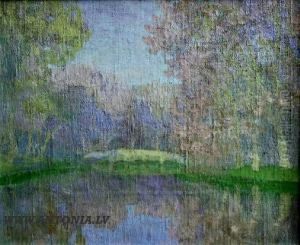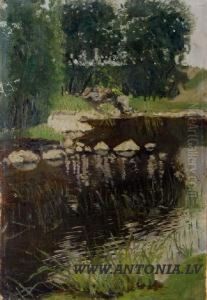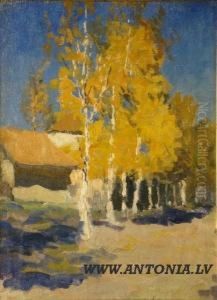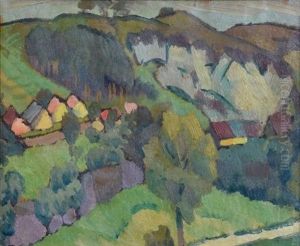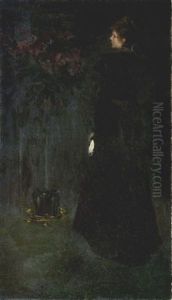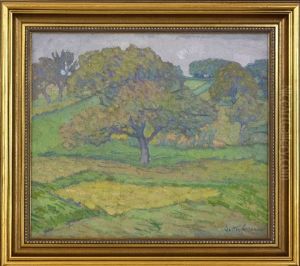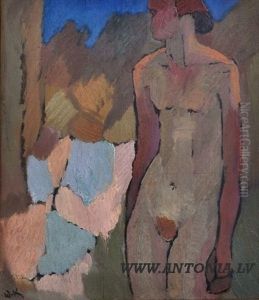Janis Valters Paintings
Janis Valters, also known as Johann Walter or Jan Walter, was a Latvian painter and one of the most prominent figures in Latvian art at the turn of the 20th century. Born on May 24, 1864, in Saldus, which was then part of the Russian Empire, Valters was initially influenced by the academic art traditions of the time, but he later became a key proponent of Impressionism in Latvia.
Valters began his artistic education at the Imperial Academy of Arts in Saint Petersburg, Russia, which was a central institution for art education in the region. After completing his studies there, he traveled extensively throughout Europe, which was common for artists of his time seeking to expand their knowledge and experience. During his travels, he was exposed to various art movements and styles, which greatly influenced his work.
He spent significant time in Paris, the art capital of the era, where he came into contact with Impressionist painters. The Impressionist focus on light and color, as well as their more relaxed brushwork, made a lasting impact on Valters' artistic direction. When he returned to Latvia, he brought these new influences with him, and his work began to reflect the techniques and sensibilities of the Impressionist movement. His paintings often depicted rural Latvian landscapes, local people, and scenes of everyday life, marked by a harmonious palette and an interest in capturing the effects of light.
Throughout his career, Janis Valters remained an active participant in the Latvian art scene, contributing to exhibitions and fostering the development of art in his homeland. He was also involved in art education, teaching at the Latvian Art Academy and influencing a younger generation of artists.
During his later years, Valters continued to paint, although his style became more subdued and his color palette darkened, possibly reflecting the difficulties of the time, including the two World Wars and the changing political landscape in Eastern Europe.
Janis Valters passed away on February 7, 1943, in Riga, Latvia, then under German occupation during World War II. Despite the challenges of his era, his legacy as a pioneer of Latvian Impressionism and as an educator endures, and his works are celebrated in Latvian museums and collections as vital parts of the nation's cultural heritage.
